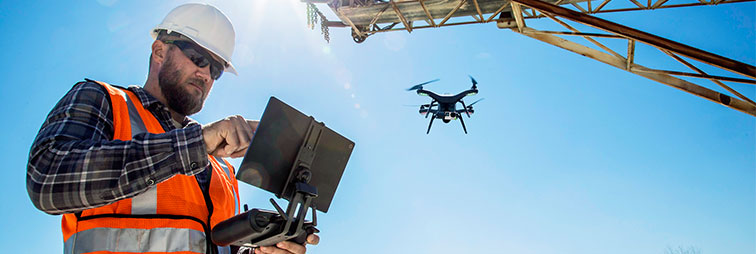You have no items in your shopping cart.
Post Requirement
The Indian construction industry has been one of the fastest growing industries in the last few years. It is an evergreen, flourishing and sustainable sector. The construction industry has been relatively slow in the advancement of new methods towards achieving maximum efficiency. However, technology has recently evolved to challenge the budget for construction and labour while reducing the wastage of materials. Recent trends are changing the roles of construction professionals. Here is a list for all keen eyes in the construction industry about upcoming technologies you should know about to stay up to date in this dynamic industry.
Prefabricated Construction

The conventional method of construction involves bringing all materials to one site where assembly is done in a singular process. On the other hand, prefabricated construction is the process of assembling the different components of a structure separately in manufacturing sites and transporting these assembled constituents to the construction site. The general perception about prefabricated construction may vary, however, there are many advantages to this method of construction. The interference of unnecessary actions is avoided when this streamlined method is used. Due to the flexibility of this process, components can be distributed to any site without any confusion and there are countless opportunities presented. Prefabricated Construction is also an eco-friendly method and the overall efficiency and productivity are increased.
Green Construction

The concept of Green Building has already been established for the last few years. With the rapid advancement of technology, new concepts are being tried and implemented with the basic goal to decrease the harmful impact that the construction industry causes to the surrounding environment. Construction is indirectly responsible for at least one-fifth of the release of toxic emissions throughout the world. Green Building Codes are now being accepted as the norm to follow responsible practices for both pre and post construction usage of buildings. The involvement of the construction industry in environmentally responsible practices is a certain trend to be seen in the next few years.
Drones

Drones have already been in use for the last couple years. When it comes to the construction industry, drones are now used for surveying construction sites to collect information that can support the inspection and maintenance of infrastructure. Drones are designed to operate with high precision to provide accurate data and hence, save a lot of time. They are made to be weather-resistant and can be used to survey remote areas that are cut-off from human reach, thereby eliminating possibilities of risk to hazardous injuries. Drones provide intelligent information using 3D mapping which can be integrated with advanced software to identify problem areas and decrease the overall time and budget costs on a construction project. The initial cost of drones is definitely outweighed by the advantages of this technology as there is a visible increase in efficiency. Drones are tools that will definitely play a significant role in the construction industry.
Building Information Modelling (BIM)

Building a structure is a complex process that requires coordination and consistency in the workflow process. Professionals in this industry are constantly challenged with completing a successful project while handling hurdles such as time constraints, limited budgets, insufficient labour force, etc. Mistakes can prove to be costly. This is the same for architectural, structural and industrial fields.
Building Information Modelling software is used to depict a visualisation of the construction site using previously extracted data to reduce the uncertainty of its constraints and analyse the impact of certain decisions which could improve the efficiency of the workflow. BIM has huge potential in the industry because it increases the overall safety and workability of employees. BIM is also expected to decrease the estimate costs used for construction projects.
3D printing

Although 3D printing is still at an early stage in our country, there is great potential for this technology in the construction industry. Known as building printing, this technology can be used to formulate different structures and improve the planning of these construction projects. Building printing is also being implemented to use sustainable materials. Within a few years, this method will be regularly implemented by the construction industry.
Please check out:
Where does all the C&D waste go?
Srujana T













